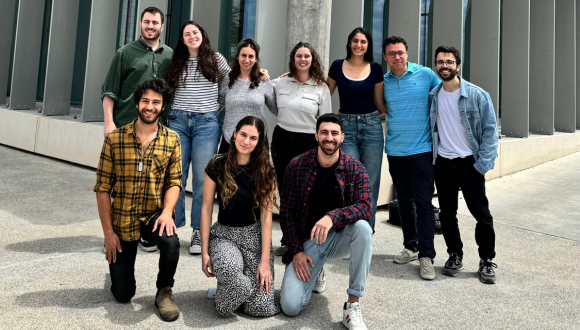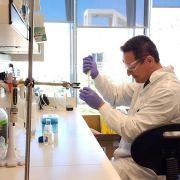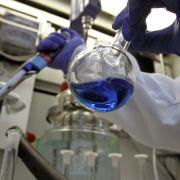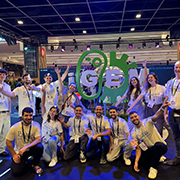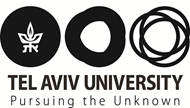TAU Students Develop RNA-Based Therapy to Fight Lung Cancer
As part of 2025 iGEM competition, team prepares to highlight their work on global stage
A team of 12 Tel Aviv University (TAU) students, from undergraduates to PhDs, is currently developing a novel, RNA-targeted therapy for lung cancer. The project, Oncoligo, aims to disrupt cancer at its genetic roots, using advanced modeling and molecular biology to selectively kill cancer cells with minimal side effect; it will be presented October 28 to 31, 2025 on the global stage in Paris at the annual iGEM competition, the world’s largest showcase for synthetic biology.
A Team Built Across Disciplines
Led by Shir Shance and Idan Eyni, third-year undergraduate students in biotechnology and in biomedical engineering respectively, the TAU iGEM team brings together campus collaboration across disciplines like medical sciences, computer science, mathematics, biotechnology and biomedical engineering.
“Synthetic biology is a combination of molecular biology and sophisticated engineering tools,” explains Eyni.
“So iGEM is really all about interdisciplinary teams and bringing all these different strengths together.”—Idan Eyni, biomedical engineering undergraduate
The TAU IGEM program was founded by Prof. Tamir Tuller from the engineering faculty (an expert in computational and synthetic biology), who is the lead supervisor of the program. The team is also supported by a scientific steering committee that includes Profs. Avigdor Eldar, Uri Gophna, Martin Kupiec and Itai Benhar.

Members of TAU’s iGEM team join Startup Nation Central for mentorship on entrepreneurship.
In addition, it is supported by an entrepreneurship committee that includes Yair Sakov (founder and managing director of TAU’s Entrepreneurship Center) and the team at Startup Nation Central.
A New Approach to Cancer
Oncoligo targets a fundamental weakness in cancer cells: their faulty mRNA. Rather than trying to destroy cancer cells via their mutated - proteins, as many current therapies do, the team is working to target cancer cells via the mutations in the mRNA molecules. The key lies in molecules known as antisense oligonucleotides (ASOs), which can bind to mutated RNA and deactivate it.
“Think of DNA as a recipe book, RNA as like a single recipe out of this book … and the protein is the final dish.”—Shir Shance, biotechnology undergraduate
“In cancer cells, the DNA has mutations, meaning the recipe is often damaged, leading to defective proteins … and so we’re thinking about how to kill cells with errors in the recipe so the damaged, cancerous proteins can’t exist anymore,” explains Shance.
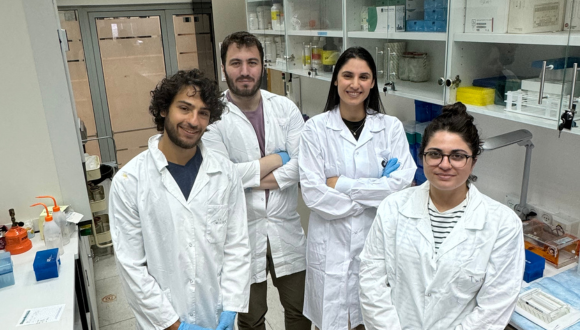
Oncoligo members in the lab (from left to right): Roni Zarakhovsky, Oren Haviv, Shir Shance and Gal Aziel.
By designing novel ASOs that specifically bind to cancerous mRNA, the team hopes to offer a therapy that selectively targets tumor cells while leaving healthy tissue unharmed. This approach diverts from most current therapies, which target the cancer cells via chemotherapy and other nonspecific methods.
Powered by Modeling, Guided by Experimentation
One aspect that makes the project especially innovative is the use of computational modeling to design the most effective ASO sequences.
Michael Kovaliov, a master’s student in applied mathematics, leads the modeling team. “RNA can be difficult to distinguish and so we want to build a computational model that knows how to target certain areas” he explains.
“So, we’re first coming up with the computational model … then running some sequences in vitro in an actual cell line to test how effective it is. Once we get our results, we plug them back into the computer, we analyze them, and we try to make the model better once again.”—Michael Kovaliov, graduate student in applied maths
The team is currently testing their ASOs in model organisms like yeast and in human cell lines, with plans to eventually move into human cancer cell lines in the months ahead. If successful, their approach could offer a template for developing RNA-targeting therapies across a range of cancers.
Building Community, Locally and Globally
In parallel, the team has helped organize ISRA-GEM, a local version of the iGEM competition that took place in June and invited Israeli high school and university students from across the country to submit their own synthetic biology projects. This year, the competition saw over 250 participants from both central and peripheral regions of Israel.
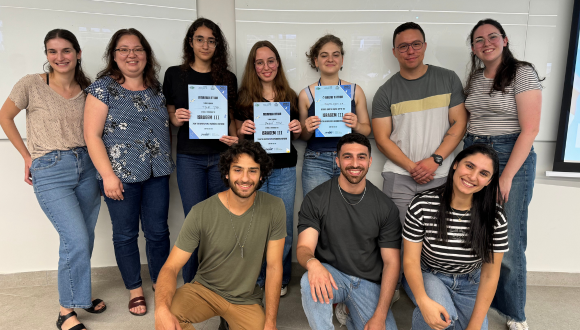
TAU’s iGEM team members award winners of the 2025 ISRA-GEM competition.
The team is also holding an international online meetup on August 28, connecting iGEM teams from more than 17 countries—including Egypt, France, India, Pakistan, the United Arab Emirates, Zimbabwe and Ghana. “The idea is to share ideas and collaborate and also practice for the iGEM grand final in Paris,” says Shance.
Looking Ahead to Paris—and Beyond
With the main iGEM competition approaching, TAU’s iGEM team is focused on preparing a proof of concept and finalizing a research tool they’ve built to help others design ASOs for different diseases. While the team is hoping to once more bring home gold (TAU won a gold medal at last year’s competition), they’re also just excited for what the opportunity will bring.
“It’s a great experience for us to present our project and to reach other researchers from all over the world to learn from them.”—Idan Eyni.
The TAU team additionally hopes that the iGEM competition marks the beginning of a lasting contribution to cancer research, one that can be continued in the form of a startup: “iGEM is designed to prepare you for the industry,” says Kovaliov. “Good science needs to come in conjunction with a coherent business plan; if this project matures enough, we would love to open a company.”
Learn more about TAU’s 2025 iGEM team and the Oncoligo project.

